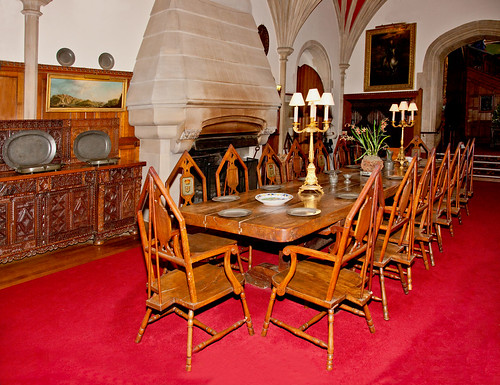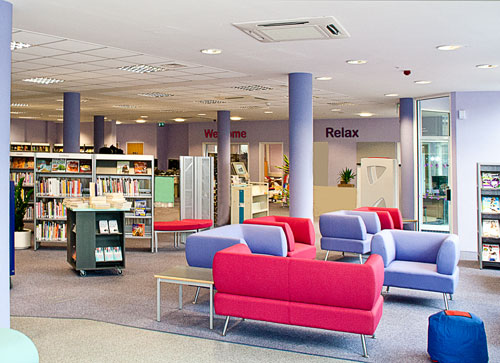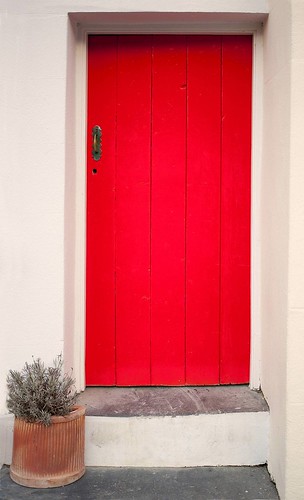
• Red Door •
Doors seem to have a powerful psychological impact…
• Red Door • By Netkonnexion on Flickr![]()
Just what is the fascination with doors?
They are the subject of an image that most photographers take at one time or another. They are important in sayings in most languages. Yet visually they act to stop you seeing within, or do they? In fact doors provide a whole range of visual and conceptual photo-opportunities.
A real psychological impact
Recent research ![]() at Notre Dame University, Indiana, has suggested that going through doorways causes memory lapses.
at Notre Dame University, Indiana, has suggested that going through doorways causes memory lapses.
Entering or exiting through a doorway serves as an ‘event boundary’ in the mind, which separates episodes of activity and files them away.
Professor G. A. Radvansky
While the impact of going through a doorway is clearly a significant memory event there are undoubtedly powerful social forces at work too. Many of the worlds nations have significant ‘doors’ or ‘gates’ in their social consciousness with dominant architectural sites that resemble doors to the nation. Old photographs of occupying powers at the national gate is enough to evoke tearful responses from survivors of the time. The German occupation of Paris, France, is bought to mind through harrowing pictures at the Arc de Triomphe in 1940.
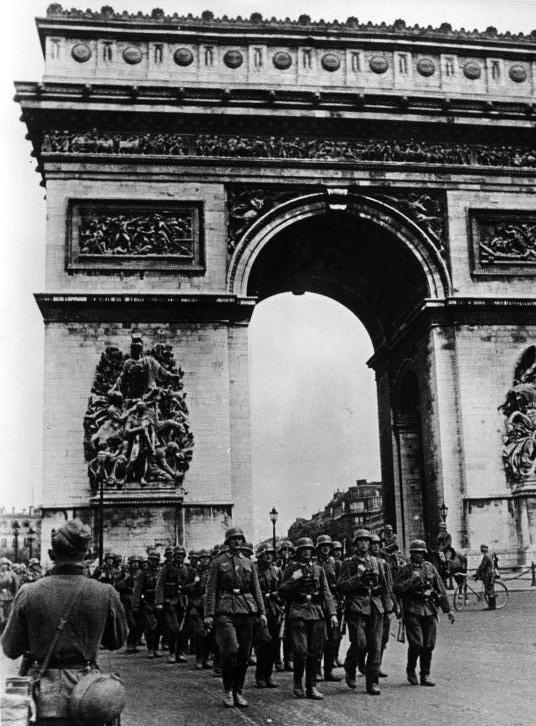
• Paris, Deutsche Truppen am Arc de Triomphe •
German troops at the Arc de Triomphe, Paris, 1940.
Paris, Deutsche Truppen am Arc de Triomphe on Wikipedia![]()
Entering the castle
On the more mundane level we all think of our homes as the feudal lords of past times thought of their castles. Our doors are the virtual fortifications that keep the evil hordes at bay. The popular culture of police drama is always breaking the door down in a symbolic statement of violation in order to capture the “bad guy”. Doors are both a symbol of safety and a manifestation of violation when breached.
Not only do doors and gates have an impact on social and dramatic conciousness but they are important to the language too. We talk of “having a foot in the door”, or “opening doors for the future” and so on. We use the idea of doors as both a defence and as an access. Many classic stories rely on symbolic or actual doors as the focus for the story. Even science fiction has its “stargates” and “doors” to other universes. The door connects to all sorts of consciousness stretching ideas.
Art, photography and doors
Doors are also a significant part of the cultural scene too. I did a search for “door” on Flickr, the popular photography social networking site. My simple search returned more than 4.5 million results! In fact doors have had a very long history in art and architecture. The ancient Greeks explored the concept of aesthetics and architecture from their earliest times. The proportions of architectural designs for doors and arches have long been associated with mathematical and aesthetic principles. It is not surprising that doors have penetrated so deeply into the modern psyche, they have a lot to say about our culture. Photographers have picked up on that fact.
Interesting artistic approaches
Pattern: The strong similarity of the conventional shape of the door provides a large number of options for pattern photography. Doors are often dissimilar in so many ways (door furniture, colour, windows etc) that the regularity of the frame becomes the pattern forming element while the rest is the interest.
Montage: Totally different doors offer enough similarities to be able to form great photomontage opportunities. I have seen countless door montages and they always draw my eye.

• 50 Doors in Crestview •
The regularity of the door shape make it ideal for pattern and photomontage shots.
Colour: Brightly coloured doors are almost universally photographed. People seem to want to make a statement with their entrances and photographers have gladly advertised the fact. My own picture at the top of the page is an example. Colour draws the eye.
Character and sense of place
Character: Many older buildings have wonderful old doorways. They can be found in some of the most ordinary of locations as well as more grand surroundings. The photographer with an eye to architectural detail can find some wonderful photographic opportunities in old doors.
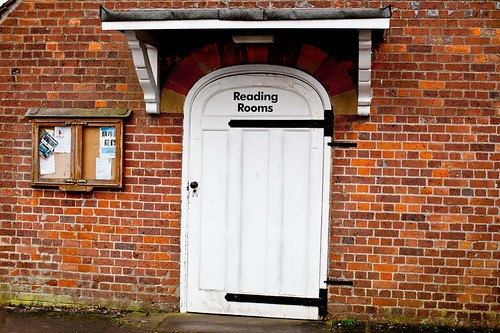
• The hidden secrets behind doors •
Click image to view large
The hidden secrets behind doors By Netkonnexion on Flickr ![]()
Sense of place: Doors say a lot about a building and often about the type of occupation, they project a strong sense of place, of being and of architectural meaning. There are homely ones, business-like ones, run down doors, expensive, cheap… I cold go on. The door speaks about the place and people.
Beyond the obvious…
The grand statement: I mentioned the national gateway theme of many nations. The grand statement of ‘national’ arches or gates is paralleled by some of the grand doors of classical architecture. Huge structures, grand columns, magnificent entrances all serve to impress and awe the visitor – they tell a story of power and control behind the nation. We see equally as powerful door statements in the doors of some of today’s global businesses who’s power and money rival the historical extent of former empires.
Strong story potential: With all these things that doors can say they can also tell great stories. Street photographers and portrait photographers have a long association with them, as do travel photographers. They know a person in association with a door, especially their own, tells a story that jumps out of the image. Looking for a strong story is a holy grail for photographers.
Secrets: Closed doors pique our interest because we are all a little nosy. Who has not walked past an interesting door and wondered what lay within. Even the plainest could hide secrets we cannot even imagine. The secret, the mysterious and the hidden are all things that pull us into an image. They are interesting for themselves, but they also stimulate imagination. Often a peek in a window in association with an interesting door is a great way to give a taste of hidden fruit beyond our reach… a sure way to keep the viewer interested.
Look out for a door…
There is so much potential in this photographic subject. Sometimes you can walk right past a photo-opportunity if you are unaware. Doorways are there with us every day. They are a source for forgetting and a reason to remember. Think about photographing them. Enjoy!
Related articles/links:
Start Photokonnexion email subscription now!
Photokonnexion Photographic Glossary – Definitions and articles.
Walking through doorways causes forgetting: Further explorations ![]()
Walking through doorways causes forgetting, new research shows ![]()
Forget why you walked into the room? Blame door, say psychologists ![]()
Arc de Triomphe on Wikipedia.
Definition: Aesthetic; Aesthetics
Definition: Photomontage
We would love to have your articles or tips posted on our site.
Find out more…
Write for Photokonnexion.



